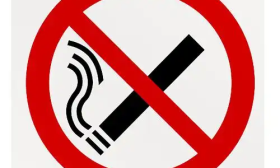The Unseen Agony: How Tobacco Smoke Fuels the Fire of Chronic Rhinitis and Its Debilitating Headaches
If you are one of the millions living with chronic rhinitis, you know the struggle is real. The constant nasal congestion, the endless post-nasal drip, the sneezing fits that arrive unannounced—it's a daily battle. But for many, the most debilitating symptom isn't in the nose at all; it's the pounding, pressure-filled headache that seems to take up permanent residence behind your eyes and in your forehead. What if we told you that a common, often overlooked habit could be pouring gasoline on this inflammatory fire? That habit is tobacco use, in any form.
This article isn't about judgment; it's about understanding. We will explore the intricate and vicious cycle of how tobacco smoke—whether from cigarettes, cigars, or even secondhand exposure—directly aggravates chronic rhinitis and acts as a powerful trigger for those associated headaches. By the end, you will have a clear picture of the "why" and the "how," empowering you with knowledge to make informed decisions for your health and well-being.
The Rhinitis-Headache Connection: More Than Just a Stuffy Nose
First, let's clarify what's happening inside your body. Chronic rhinitis is fundamentally a condition of persistent inflammation of the nasal and sinus passages. This isn't a simple cold that comes and goes; it's a state of constant immune system alert. The lining of your nose and sinuses, called the mucosa, is swollen and irritated. This swelling narrows the delicate drainage pathways of your sinuses—small openings called ostia.
When these pathways are blocked, mucus, which is constantly being produced to trap dust and germs, can't drain properly. It becomes trapped inside the sinus cavities. This stagnant mucus creates a perfect breeding ground for bacteria and viruses, but even without an infection, the simple act of it sitting there increases pressure. Your sinuses are air-filled spaces in the bones around your nose. When they fill with pressure, they push against the surrounding bone and nerve endings. This is the primary engine of a rhinitis-induced headache, often felt as a deep, throbbing pain in the cheeks, forehead, or bridge of the nose. This is what we refer to as a sinus pressure headache from chronic inflammation.
Tobacco Smoke: The Perfect Inflammatory Storm

Now, enter tobacco smoke. It is not a single substance but a complex cocktail of over 7,000 chemicals, hundreds of which are toxic and at least 70 known to cause cancer. When you inhale tobacco smoke, either directly or secondhand, you are not just taking in nicotine; you are subjecting your already-sensitive respiratory tract to a massive assault. Here’s how it specifically targets and worsens chronic rhinitis and its painful headaches:
-
Direct Irritation and Cilia Paralysis: The inside of your nose is lined with microscopic, hair-like structures called cilia. Their job is to rhythmically sweep mucus, along with any trapped particles, toward the back of your throat to be swallowed harmlessly. This is your body's natural cleaning system. Key chemicals in tobacco smoke, such as formaldehyde and ammonia, are severe irritants. They paralyze and destroy these cilia. When the cilia stop working, the mucus—now thickened by the smoke—just sits there. This dramatically worsens congestion and directly leads to increased sinus pressure from blocked nasal passages, setting the stage for a severe headache.
-
Amplifying the Inflammatory Response: Remember, chronic rhinitis is defined by inflammation. Tobacco smoke doesn't just irritate; it actively tells your immune system to ramp up its inflammatory response. The smoke triggers the release of a flood of pro-inflammatory molecules, called cytokines. This is like shouting "fire!" in a crowded theater when there's already a small smolder. Your body overreacts, causing even more swelling of the nasal mucosa, further blocking those crucial sinus drainage pathways. This creates a direct link between tobacco use and sinus inflammation, making your baseline condition significantly worse.
-
Weakening Your Defenses and Causing Neurogenic Inflammation: Long-term exposure to tobacco smoke weakens the overall immune system of your mucosal lining, making you more susceptible to the secondary sinus infections that can trigger excruciating headaches. Furthermore, many of the irritants in smoke can directly stimulate nerve endings in your nose and sinuses, leading to a phenomenon called "neurogenic inflammation." This directly contributes to the pain signals you perceive as a headache. This is a key mechanism behind smoking induced nasal congestion and pain.
Beyond Active Smoking: The Dangers of Secondhand Smoke
Perhaps you don't smoke yourself, but you live or work with someone who does. The notion that secondhand smoke is harmless is a dangerous myth. For an individual with chronic rhinitis, exposure to secondhand smoke can be just as triggering as being a smoker. The same toxic chemicals are present, and they are still being inhaled into your sensitive nasal passages. This continuous, low-grade exposure can be enough to maintain a state of constant inflammation and cilia dysfunction, leading to persistent symptoms and chronic headache triggers from environmental smoke. Protecting your personal airspace is not an overreaction; it's a critical step in managing your health.
Breaking the Cycle: A Path to Relief
Understanding this destructive relationship is the first step toward breaking the cycle. The single most effective action you can take to reduce the frequency and severity of your rhinitis headaches is to eliminate tobacco smoke exposure.
-
If you smoke, consider quitting. This is the gold standard. We know it's challenging, but the benefits for your chronic rhinitis are almost immediate. Within days to weeks, your cilia will begin to recover and function again. The constant inflammatory assault will cease, allowing the swelling in your nasal passages to subside. This improved drainage is the most direct way to alleviate the underlying pressure that causes headaches. Seeking help from a doctor, using nicotine replacement therapy, or joining a support group can dramatically increase your chances of success. This is the ultimate strategy for managing chronic rhinitis by avoiding smoke.
-
If you are exposed to secondhand smoke, advocate for your health. Be clear with family members or housemates about the direct impact their smoking has on your physical well-being. Ask them to smoke outside, away from windows and doors. In public spaces, steer clear of smoking areas. Using a high-quality air purifier with a HEPA filter in your home can also help remove lingering particulate matter.
Complementary Strategies for a Smoke-Free Life
While avoiding smoke is paramount, supporting your body's healing process is also crucial:
- Stay Hydrated: Drinking plenty of water helps to thin mucus, making it easier to drain and preventing that thick, stagnant feeling that builds pressure.
- Nasal Irrigation: Using a saline sinus rinse or neti pot can be a game-changer. It physically flushes out trapped mucus, irritants, and allergens from your nasal passages, providing direct and immediate relief from congestion and pressure.
- Warm Compresses: Applying a warm, damp cloth over your nose and cheeks can help soothe pain and encourage sinus drainage.
- Consult an ENT Specialist: If your symptoms persist despite these measures, a visit to an Ear, Nose, and Throat (ENT) doctor is essential. They can provide a precise diagnosis, rule out other conditions, and offer advanced treatments, from prescription nasal sprays to procedures that can physically open up blocked sinus pathways.
Living with chronic rhinitis and its accompanying headaches is a significant burden. While tobacco smoke is a major aggravator, it is also a modifiable one. By recognizing it as a primary trigger and taking decisive steps to remove it from your environment, you are not just avoiding a bad habit; you are actively engaging in a powerful therapeutic act. You are giving your body the chance to calm the inflammation, restore its natural defenses, and finally break free from the relentless cycle of congestion and pain. Your path to clearer breathing and fewer headaches begins with clearing the air.












